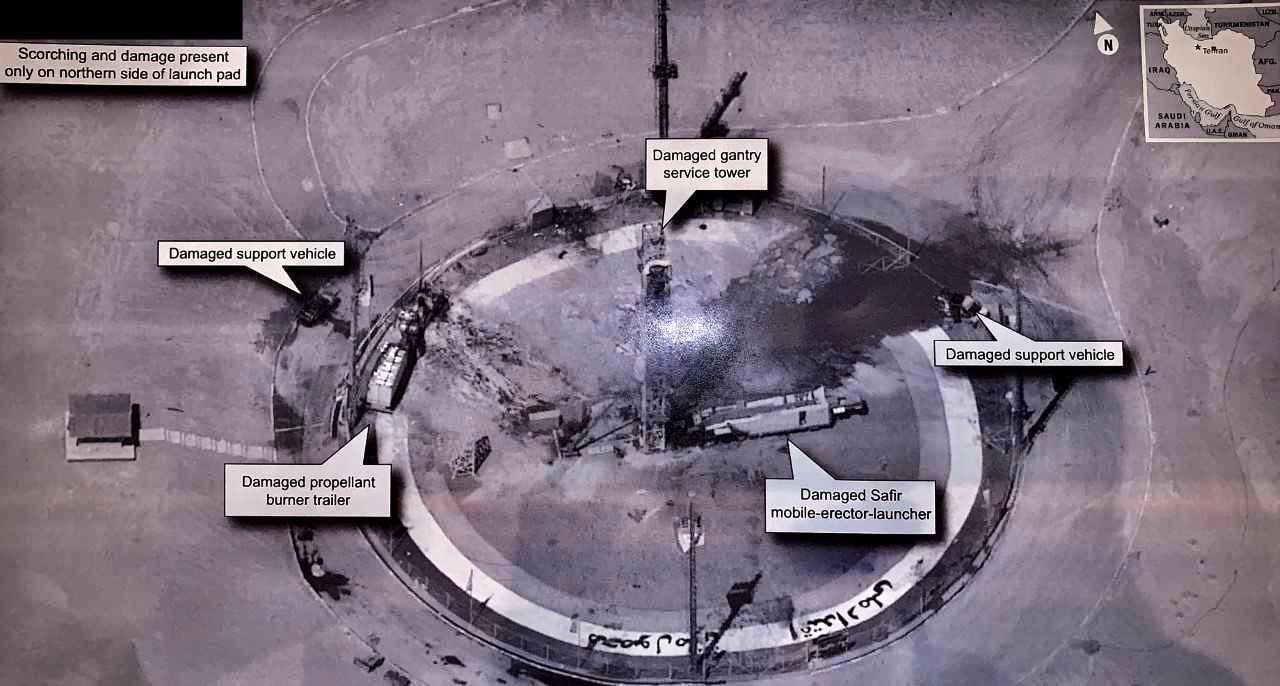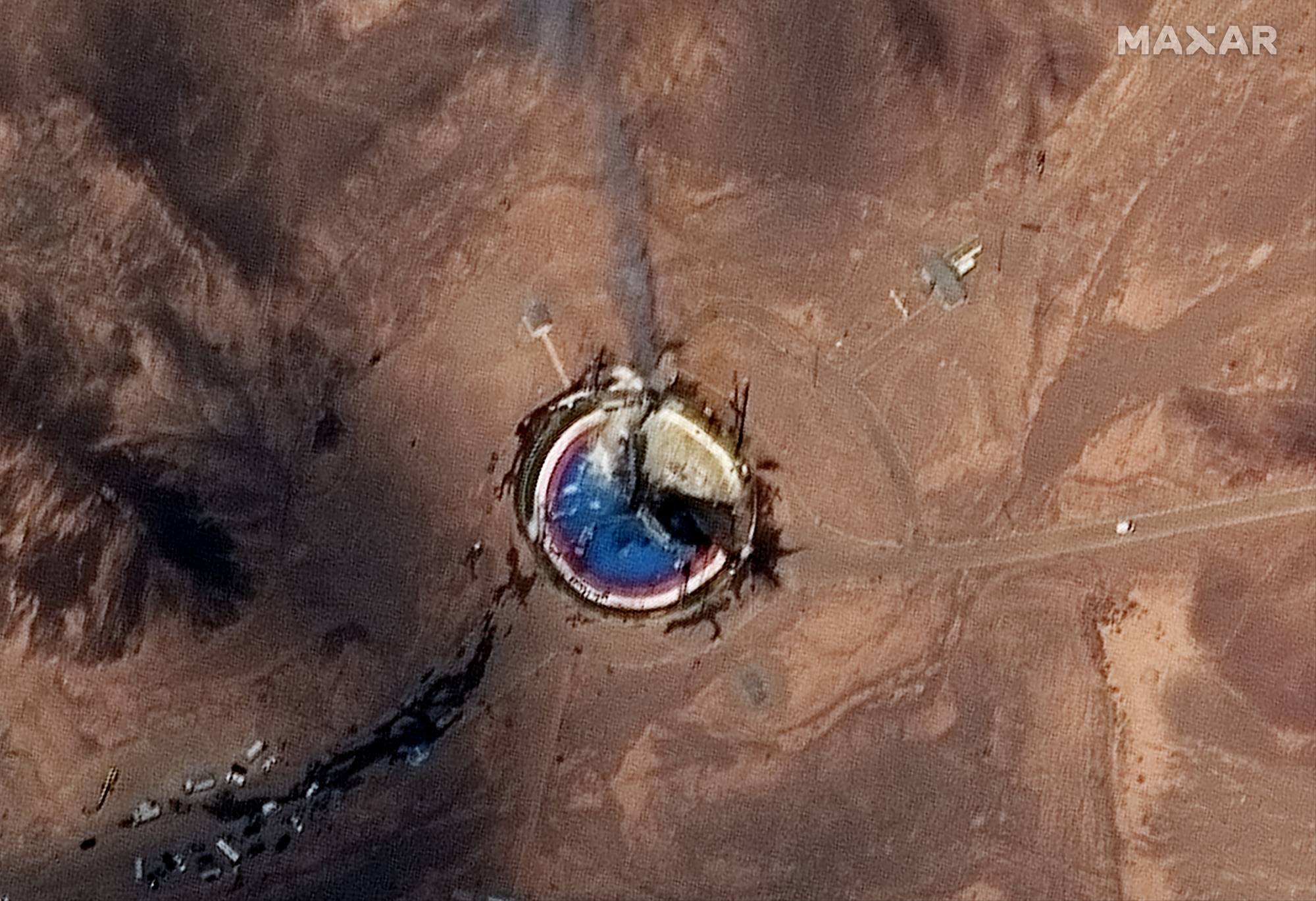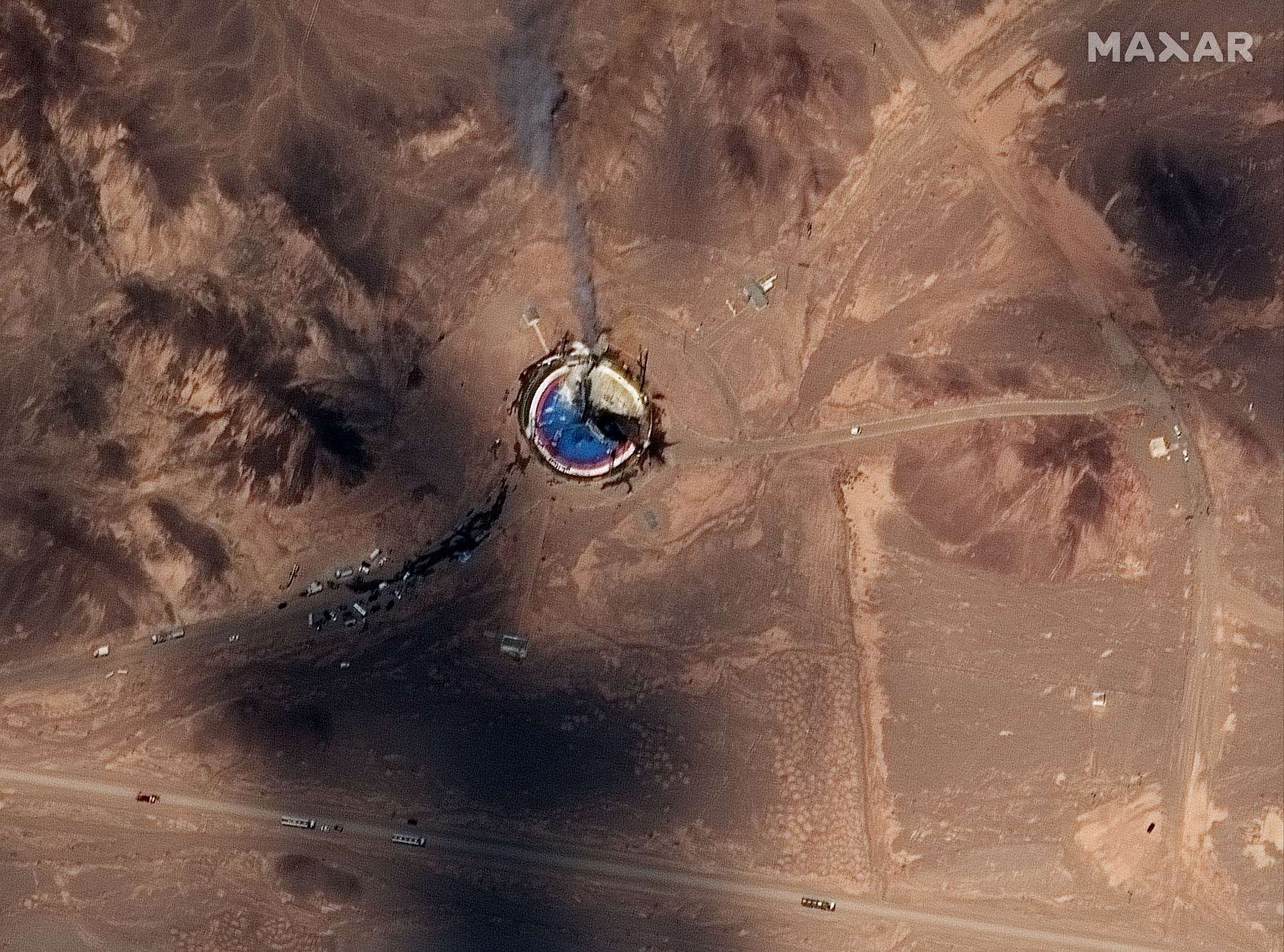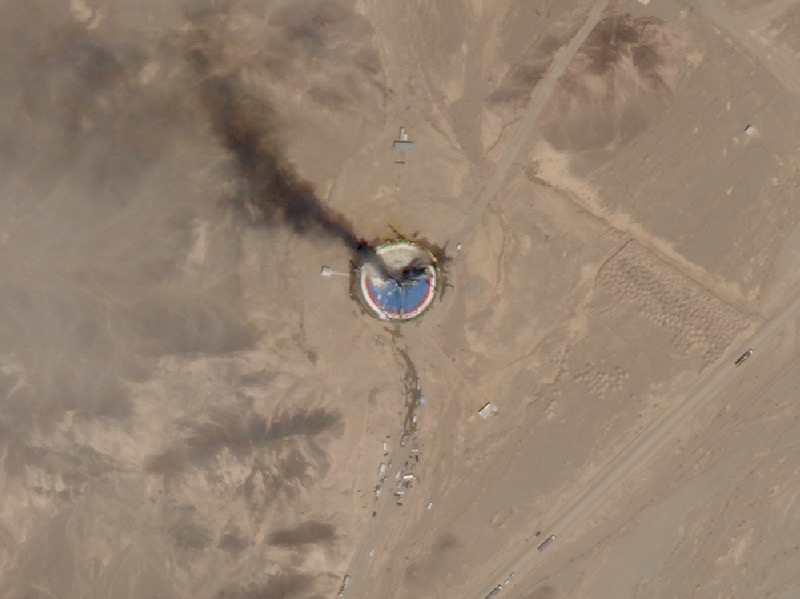Trump Tweets Photo of Iran's Rocket Failure While Denying US Involvement
It may have come from a U.S. spy satellite.
The United States of America was not involved in the catastrophic accident during final launch preparations for the Safir SLV Launch at Semnan Launch Site One in Iran. I wish Iran best wishes and good luck in determining what happened at Site One. pic.twitter.com/z0iDj2L0Y3August 30, 2019
President Donald Trump wants the world to know the United States was not involved in the failure of Iran's most recent rocket this week. To drive that point home, Trump took to Twitter and released what appears to be a U.S. reconnaissance satellite photo of Iran's launch site after the failed launch.
"The United States of America was not involved in the catastrophic accident during final launch preparations for the Safir SLV Launch at Semnan Launch Site One in Iran," Trump said on Twitter. "I wish Iran best wishes and good luck in determining what happened at Site One."
Related: Iran in Space: Rockets, Satellites & Monkeys (Photos)

Iran's rocket failure occurred Thursday (Aug. 29) and was spotted by commercial Earth-imaging satellites. The photo in Trump's tweet, however, includes much more detail, with labels indicating a damaged gantry, support structures and vehicles.
Trump's tweet also suggests the incident occurred during launch preparations and was spotted by U.S. spy satellites, but it is not clear which satellite may have taken the image or if the photo was part of a classified daily briefing for the president. The National Reconnaissance Office oversees a constellation of classified spy satellites in orbit.

According to the New York Times, Trump said it was well within his power to release the image. "We had a photo and I released it, which I have the absolute right to do," the Times quoted Trump as saying at Camp David late Friday.
Trump's tweet cam after the release of new commercial satellite images that revealed a more detailed look at Iran's failed rocket launch attempt on Aug. 29, showing smoke and debris around the crash site.
Get the Space.com Newsletter
Breaking space news, the latest updates on rocket launches, skywatching events and more!

The images were captured by Maxar's WorldView-2 satellite, showing an aerial view of the Imam Khomeini Space Center in northern Iran where the failed launch took place. A cloud of smoke is seen escaping the launch pad in the new imagery, as a row of support and maintenance vehicles surrounds the crash site.
Maxar's images, in turn, followed the release of an image by the commercial satellite imaging company Planet that also showed the Iranian rocket failure's aftermath. That image was captured by one of Planet's SkySat satellites on Aug. 29.
This is the third failed launch attempt for Iran this year, with earlier ones taking place in January and February. The January launch involved a Simorgh rocket, and the February one employed a different booster, the Safir.
Trump's tweet, which mentions the Safir SLV, suggests it was a Safir rocket being prepared for launch during the Aug. 29 incident.
Iran became launched its first satellite Omid in 2009 using a Safir rocket. The country's space ambitions have been a point of contention, with the U.S. accusing Iran of using their space program to develop missiles.

- Planet Labs Photos of Earth from Space (Gallery)
- Surface Rupture from Ridgecrest Earthquake Spotted from Space (Photo)
- Earth From Space: Amazing Astronaut Photos
Follow Passant Rabie on Twitter @passantrabie. Follow us on Twitter @Spacedotcom and on Facebook.
Join our Space Forums to keep talking space on the latest missions, night sky and more! And if you have a news tip, correction or comment, let us know at: community@space.com.

Passant Rabie is an award-winning journalist from Cairo, Egypt. Rabie moved to New York to pursue a master's degree in science journalism at New York University. She developed a strong passion for all things space, and guiding readers through the mysteries of the local universe. Rabie covers ongoing missions to distant planets and beyond, and breaks down recent discoveries in the world of astrophysics and the latest in ongoing space news. Prior to moving to New York, she spent years writing for independent media outlets across the Middle East and aims to produce accurate coverage of science stories within a regional context.









